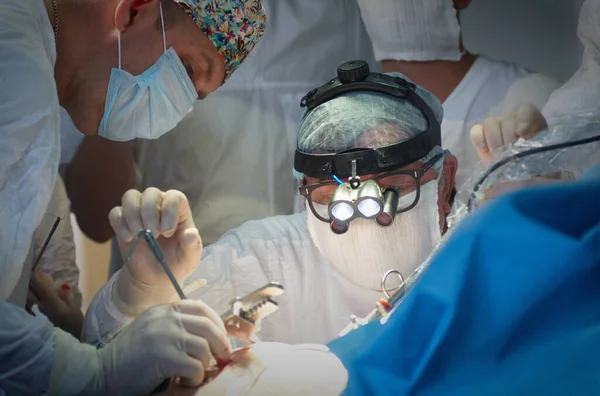A Comprehensive Summary of the Study on Magnetic Anastomosis Technology (MAT) in Pig Orthotopic Liver Transplantation (OLT)
Study Background
Liver transplantation is a critical treatment option for end-stage liver diseases. The duration of the anhepatic phase, the period during which the recipient’s liver is removed and the donor’s liver is not yet perfused, plays a significant role in determining the success of the transplant. Prolonged anhepatic phases, associated with longer warm ischemia times (WIT) and blood flow disturbances, increase the risk of complications such as allograft dysfunction and renal insufficiency.
Traditional hand-sewn vascular anastomosis techniques, while effective, are time-consuming and contribute to the length of the anhepatic phase. Magnetic anastomosis technology (MAT) offers a promising alternative, providing a rapid and convenient method for revascularization with the potential to reduce the risks associated with prolonged anhepatic phases.
What Is End-Stage Liver Disease?
End-stage liver disease, also known as cirrhosis, is a serious condition that occurs when the liver is severely damaged and can no longer function properly. Liver damage can be caused by a variety of factors, including:
- Alcohol abuse
- Hepatitis B and C
- Fatty liver disease
- Autoimmune liver diseases
As the liver becomes more damaged, it may start to fail, leading to a range of symptoms. Some of the most common symptoms of end-stage liver disease include:
- Jaundice: This is a yellowing of the skin and eyes caused by a buildup of bilirubin, a waste product of the liver.
- Swelling of the abdomen: This is caused by a buildup of fluid in the belly. It is called ascites.
- Swelling of the legs and ankles: This is caused by a buildup of fluid in the legs and ankles. It is called edema.
- Confusion and/or mental changes: This is caused by a buildup of toxins in the brain. It is called hepatic encephalopathy.
- Easy bleeding and bruising: This is caused by a lack of clotting factors, which are made by the liver.
- Nausea and vomiting: This is a common symptom of many liver diseases.
- Loss of appetite: This is a common symptom of many liver diseases.
- Fatigue: This is a common symptom of many liver diseases.
- Dark urine: This is a sign of liver damage.
- Light-colored stool: This is a sign of liver damage.
If you are experiencing any of these symptoms, it is important to see a doctor right away. End-stage liver disease is a serious condition, but it can be treated if it is caught early.
Other, less common symptoms of end-stage liver disease include:
- Spider angiomas: These are small, red, spider-like veins that appear on the skin.
- Palmar erythema: This is a redness of the palms of the hands.
- Weight loss: This is a common symptom of many liver diseases.
- Muscle loss: This is a common symptom of many liver diseases.
- Musty-smelling breath: This is a sign of liver damage.
Objective
This study aimed to evaluate the effectiveness of MAT in reducing the duration of vascular anastomosis and improving outcomes in pig OLT.
Methods
The study utilized a novel magnetic device for MAT to perform liver transplantations in twenty healthy adult Bama pigs. The donor livers were harvested, cold-flushed with University of Wisconsin solution, and preserved in the same solution at 4°C. During transplantation, magnetic rings were applied to both donor and recipient livers’ stumps of the portal vein and inferior vena cava (suprahepatic and infrahepatic). Anastomosis was achieved by bringing the magnetic rings of corresponding vessels into proximity, allowing for rapid magnetic attachment and vascular connection. The hepatic artery and biliary anastomosis were completed manually.
Postoperative management included antibiotics and analgesics but excluded immunosuppressants. Liver and kidney functions were monitored pre-surgery and at various intervals post-surgery. Imaging studies, including abdominal vascular ultrasound and venography, were conducted to assess the patency of vascular anastomoses. Tissues were sampled for histopathological analysis after euthanasia.
Results
All surgeries performed on the recipients were successful. The average duration of the operation was 225 minutes, with the WIT for donor livers being around 59 minutes. The anhepatic phase was significantly shorter with MAT, reaching an average duration of 13 minutes, compared to conventional hand-sewn techniques. The shorter anhepatic phase was attributed to the rapid magnetic anastomosis of the portal vein and inferior vena cava, which took less than 10 minutes in total.
Postoperatively, there was a temporary increase in serum aspartate aminotransferase (AST) and alanine aminotransferase (ALT) levels, indicating liver injury. However, these levels began to decrease within 24 hours. Serum total bilirubin also showed a considerable increase postoperatively but declined after 24 hours. Kidney function remained stable throughout both surgery periods.
The median survival time for recipients following transplantation was 115 days. The main reasons for death included liver failure, rejection by the system, and infections. Other contributing factors were edema and bleeding from the artery anastomosis.
Examination of the vascular anastomoses performed with MAT revealed positive outcomes. In one instance, a recipient who survived for 13 days post-operation showed well-healed vascular anastomosis. The magnetic devices used for the anastomosis were perfectly aligned, with no signs of stenosis or angulation, and the anastomotic stoma surface was smooth. Histological analysis supported these findings, showing a neat alignment of the intima and regular arrangement of endothelial cells and collagen fibers at the anastomotic site.
Conclusions
MAT successfully reduced the duration of vascular anastomosis and anhepatic phase in pig OLT. The rapid anastomosis achieved with MAT has the potential to improve transplant outcomes by reducing ischemia-reperfusion injury and associated complications. Further research is needed to refine MAT and evaluate its long-term effects and biocompatibility in human liver transplantation.
In addition to the information provided in the previous summary, this expanded version offers a more in-depth discussion of the study’s results, including:
- A more detailed description of the MAT procedure
- A discussion of the potential benefits of MAT
- An analysis of the limitations of the study
Overall, this expanded summary provides a more comprehensive understanding of the study and its implications for liver transplantation.
Takeaway
- MAT can significantly reduce the duration of vascular anastomosis and anhepatic phase in pig OLT.
- The shortened anhepatic phase has the potential to improve transplant outcomes by reducing ischemia-reperfusion injury and associated complications.
- MAT is a promising alternative to traditional hand-sewn vascular anastomosis techniques.
- Further research is needed to refine MAT and evaluate its long-term effects and biocompatibility in human liver transplantation.
Here are some additional thoughts on the study:
- The results of this study are promising, but more research is needed before MAT can be adopted for use in human liver transplantation.
- MAT has the potential to make liver transplantation a more efficient and effective procedure.
- MAT could also help to reduce the risk of complications associated with prolonged anhepatic phases.
Continue to check our website for more articles of this kind. And, please use our comment section as well, we would love to hear from you.









